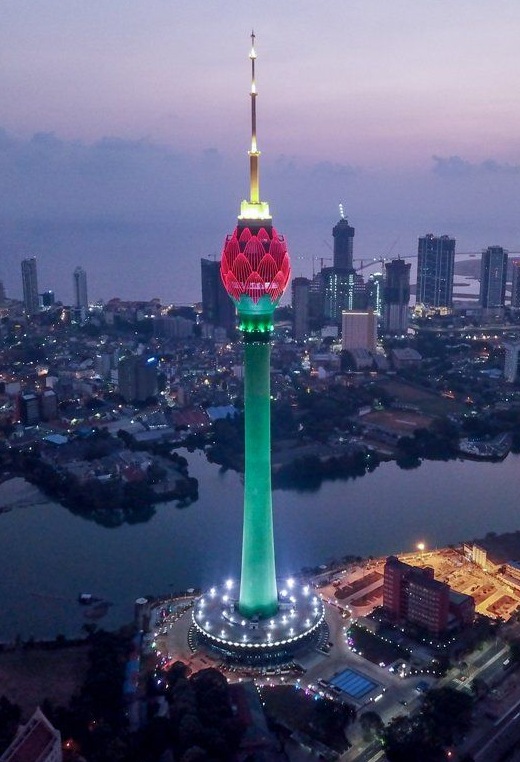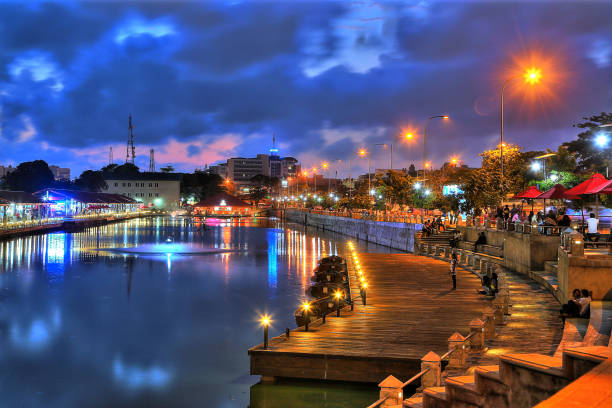Welcome to the Commercial Capital Sri Lanka !
Welcome to Colombo!
Colombo, Sri Lanka's bustling capital, seamlessly blends rich history with modern vibrancy. From the colonial architecture of Fort to the serene shores of Galle Face, it offers a diverse cultural experience. Dive into its lively markets, savor authentic Sri Lankan cuisine, and explore a city where tradition meets contemporary charm. Discover Colombo's unique charm today!



1. Colombo Lotus Tower
Colombo Lotus Tower, is a 351.5 m (1,153 ft) tall tower, located in Colombo, Sri Lanka. It has been called a symbolic landmark of Sri Lanka. As of 2019, the tower is the tallest self-supported structure in South Asia; the second tallest structure in South Asia . The shape of the structure (lotus bud) makes it more scenic and attractive.




2. Independance Memorial Hall
Independence Memorial Hall (also known as Independence Commemoration Hall) is a national monument in Sri Lanka built for commemoration of the independence of Sri Lanka from the British rule with the restoration of full governing responsibility to a Ceylonese-elected legislature on 4 February 1948. It is located in Independence Square (formerly Torrington Square) in the Cinnamon Gardens, Colombo. It also houses the Independence Memorial Museum.
The monument was built at the location where the formal ceremony marking the start of self-rule, with the opening of the first parliament by Prince Henry, Duke of Gloucester occurred at a special podium on 4 February 1948.
Located at the head of the monument is the statue of the first prime minister of the country Rt. Hon. Don Stephen Senanayake "The Father of the Nation". Most of the annual National Independence Day celebrations have been held here. Apart from a monument it served as the ceremonial assembly hall for the Senate of Ceylon and the House of Representatives of Ceylon until the parliament was moved to the new parliament complex. Currently it is the venue for religious events and annual national day celebrations.



3. Colombo National Museum
The Colombo National Museum, also known as the Sri Lanka National Museum, is a museum in Colombo and the largest in Sri Lanka. Founded in 1877 and maintained by the Department of National Museums, it holds collections of significant importance to Sri Lanka, such as the regalia of the Kandyan monarchs, as well as many other exhibits relating the country's cultural and natural heritage. This is a perfect place to know more about Sri Lanka.




4. Viharamahadevi Park
Viharamahadevi Park is a public park located in Cinnamon Gardens, in Colombo, situated in front of the colonial-era Town Hall in Sri Lanka. It was built by the British colonial administration and is the oldest and largest park of Colombo. The park was originally named "Victoria Park" after Queen Victoria but was renamed after Queen Viharamahadevi, the mother of King Dutugamunu on July 18, 1958.
The park features include a huge Buddha statue which replaced the statue of Queen Victoria which originally stood there, and a series of water fountains. It also includes a mini zoo, a children's play area and a BAC Jet Provost. There are Muscovy ducks in the park. They swim in the artificial lake and walk on the grass beside it.
Viharamahadevi Park is the only large-scale public park in Colombo, and is maintained by the Colombo Municipal Council. Located at its western end is the Cenotaph War Memorial, Colombo and the Colombo Public Library. The Vihara Maha Devi Park Open Air Stadium is a venue for concerts and public events.




5. Gangaramaya Temple
Gangaramaya Temple is one of the most important temples in Colombo, Sri Lanka, being a mix of modern architecture and cultural essence. Located on the Beira Lake, it was completed in the late 19th century.The temple's architecture demonstrates an eclectic mix of Sri Lankan, Thai, Indian, and Chinese architecture.
This Buddhist temple includes several imposing buildings and is situated not far from the placid waters of Beira Lake on a plot of land that was originally a small hermitage on a piece of marshy land. It has the main features of a Vihara (temple), the Cetiya (Pagada) the Bodhitree, the Vihara Mandiraya, the Seema malaka (assembly hall for monks) and the Relic Chamber. In addition, a museum, a library, a residential hall, a three storeyed Pirivena, educational halls and an alms hall are also on the premises.
Most notable for tourists is the architecture of Seema Malaka, which was built with donations from a Muslim sponsor to the design of Geoffrey Bawa.




6. Port City
Port City is a multi-services special economic zone which is located near to the Galle Face Green in Colombo, Sri Lanka. Although still it is under construction, several parts of the project are completed and can be visited (should have a prior reservation. You may download the Port City Colombo app from the Google Play Store or Apple App Store to make such reservations. Also you may visit www.portcitycolombo.lk for further details).



7. Galle Face Green
Galle Face is a 5 ha (12 acres) ocean-side urban park, which stretches for 500 m (1,600 ft) along the coast, in the heart of Colombo, the financial and business capital of Sri Lanka. The promenade was initially laid out in 1859 by Governor Sir Henry George Ward, although the original Galle Face Green extended over a much larger area than is seen today. The Galle Face Green was initially used for horse racing and as a golf course, but was also used for cricket, polo, football, tennis, and rugby.
Galle Face Green originally extended over a much larger area than exists today. Records indicate that it was bounded to the north by Beira Lake, the ramparts of Colombo Fort and the city's cemetery (established in 1803), to the west by the Indian Ocean, whilst to the south by the Galle Face Hotel (established in 1864, although the original building on the site was a Dutch villa) and to the east by St Peter's Church (consecrated in 1821). The Galle Face Green was initially laid out by the Dutch as a means to enable their cannons a strategic line of fire against the Portuguese. One version of how the name Galle Face is derived, is that it is from the original Dutch name for the fortifications, in that the gateway which gave access to the Colombo Fort was called the Gal Gate, as it faced southwards to Galle and faas means front, so it literally means in front of the fortification that faced toward Galle. Another version is it is a corruption of the original name for the area's rocky shoreline, Gal Bokka, Gal being the Sinhalese for rock and that Gal Gate actually meant rock gate.

8. Planetarium
Sri Lanka Planetarium (Sinhala: ශ්රී ලංකා ග්රහලෝකාගාරය) is a public planetarium located in Colombo, Sri Lanka which was established in 1965. It is the first and only planetarium in the country and maintained as an institute under the Ministry of Science, Technology and Research.
The planetarium has a digital fully-spherical projector stationed at the centre of the building, which projects an artificial sky on the 23 m (75 ft) diameter dome above a 570-seat auditorium. The planetarium has become more popular due to it's eye gazing shape and structure of the building. This would be an amazing spot for your travel.



9. The Old Colombo Dutch Hospital
The Old Colombo Dutch Hospital (known as The Dutch Hospital) is considered to be the oldest building in the Colombo Fort area dating back to the Dutch colonial era in Sri Lanka. It is now a heritage building and a shopping and dining precinct. It is a perfect spot if you're interested in Dutch architecture and technology.



10. Beira Lake
Beira Lake is a man-made lake in the centre of the city of Colombo in Sri Lanka. The lake is surrounded by many large businesses in the city. It initially occupied approximately 1.65 km2 (0.64 sq mi) of land 100 years ago but has since been reduced to 0.65 km2 (0.25 sq mi) today due to various reasons. During the colonial era of the Portuguese, Dutch and the English, the lake was used for a wide variety of purposes. It still retains its Portuguese name. It is connected to many intricate canals which provided an easy way of transporting goods within the city and suburban cities.




11. Floating Market
The Pettah Floating Market is located on Bastian Mawatha in Pettah, a neighborhood in Colombo, Sri Lanka, and consist of 92 trade stalls, with a number of the stalls established on boats on Beira Lake. The floating market serves as a tourist attraction selling local produce and local handicraft.